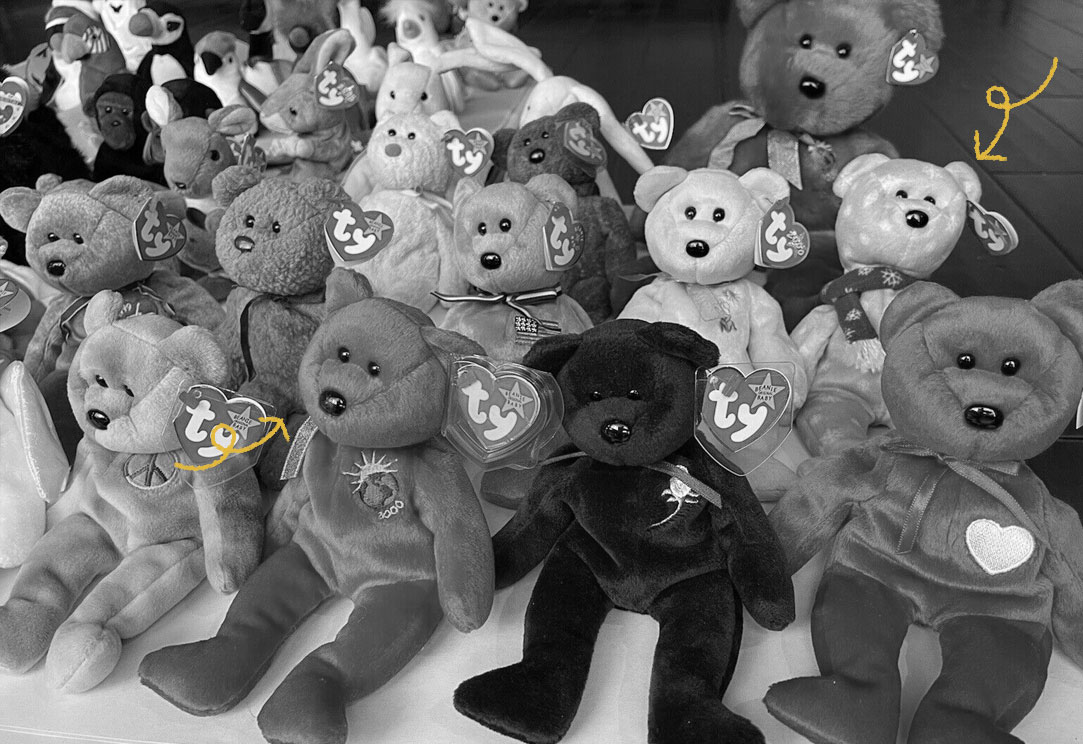In the 1970s, H. Ty Warner worked at the Dakin Toy Company. He was reportedly fired in 1980 after trying to sell his own products alongside the company’s. After his termination, Dakin traveled to Italy to visit friends and discovered a line of plush toy cats that were different from the ones he’d seen before. He returned to the United States, launched Ty Inc. in 1986, and began to make plush toy cats that were under-stuffed and contained small PVC pellets in place of traditional stuffing. Reportedly, he under-stuffed them because it allowed for more movement and, thus, greater realism. He then iterated on his own design, making smaller, palm-sized stuffed animals of all types. He called them Beanie Babies and debuted them at the World Toy Fair in New York in 1993. He originally priced them under market value at just $5 per stuffed toy. Beanie Babies immediately took off and soon became an intense craze. Collectibles like the Princess Diana Beanie Baby were valued extremely highly and often sought after by adults rather than children. However, the stuffed animals were massively popular with kids, too. In 1997, Warner even teamed up with McDonald’s to include “Teenie Beanie Babies” in the chain’s famous Happy Meals. The craze eventually died down in the early 2000s and many of the stuffed animals' values plummeted. It is worth noting that some of Warner’s girlfriends/business partners, including Patricia Roche and Faith McGowan, played integral roles in the design and success of Beanie Babies. Today, while Beanie Babies are no longer a craze like they were in the 1990s (AppleTV+ recently touched on the phenomenon in a movie entitled The Beanie Bubble), the stuffed toys are still manufactured by Ty Inc. and are still enjoyed by many people of all ages — and while most older models no longer carry the astronomical valuations they once did, many are still sought after by avid collectors.

Your go-to guide for weird history facts
Subscribe to the FREE daily email that makes learning about history fun.


